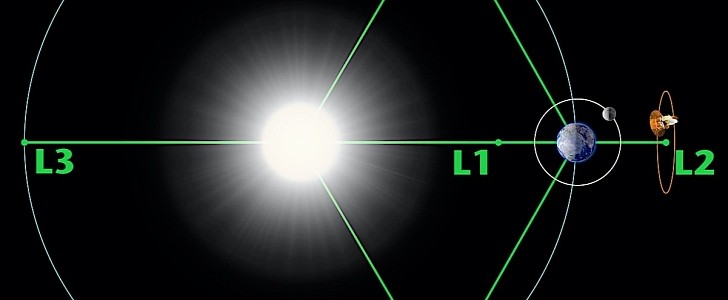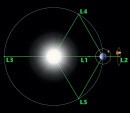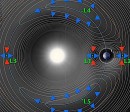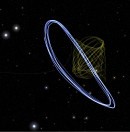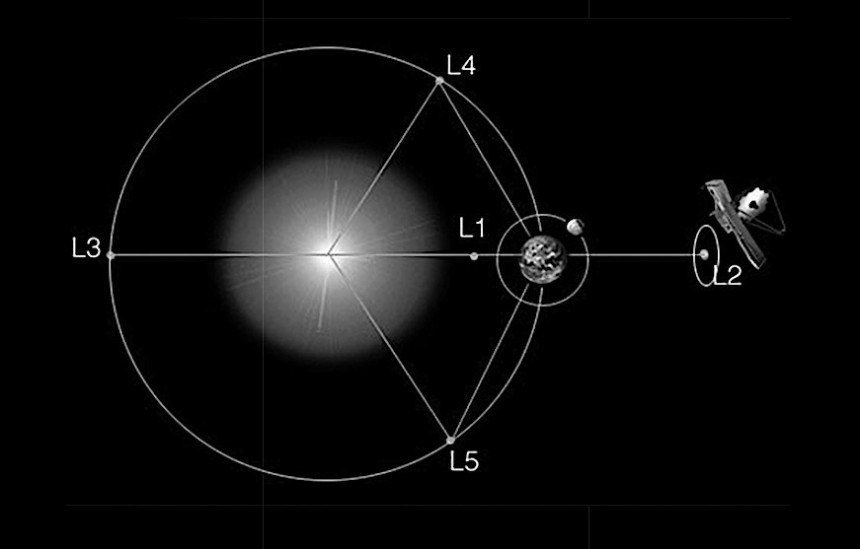When people think about telescopes, they generally imagine those giant buildings perched on top of some mountain here on Earth, or some piece of hardware floating around in close Earth orbit. But after one of the most expensive telescopes ever made, the James Webb, launched at the end of last year, those definitions were rewritten, and people now casually think about telescopes floating around 930,000 miles (1.5 million km) away from home.
With that, a new term was embedded into the minds of humans. Lagrange points, which are both wonders of celestial mechanics, and the reason why the Webb had to travel so far to get into position for its mission.
Lagrange points are officially described as points of equilibrium in space, just perfect for small mass objects to float around in, possibly forever. And by points of equilibrium, we mean places where the gravity forces of nearby planets or Suns cancel each other out, making the place a sort of an anchor for visiting spacecraft.
Our solar system has five such Lagrange points (L1 through L5), named in honor of Italian-French mathematician Josephy-Louis Lagrange, the man who first dove into the complexities of where “the gravitational pull of two large masses precisely equals the centripetal force required for a small object to move with them.”
L1 is already occupied by something called the Solar and Heliospheric Observatory Satellite (SOHO), L3 is hidden behind the Sun and it'll probably never be used by our species, while L4 and L5 are home to three large asteroids named the Trojans, or more precisely Agamemnon, Achilles and Hector.
Webb was directed after launch for L2, which together with L1 and L3 are located on an imaginary line that would run through the centers of the celestial bodies they serve. L2 is located one percent further out from the Sun than the Earth, and it was chosen for specific reasons, listed below.
First up, as said, Lagrange points are perfect anchor points thanks to the way in which gravity forces balance each other out. This allows the hardware to remain in a fixed position relative to both the Earth and the Sun, moving in lockstep with our planet around the Sun, like a “sidecar on a motorcycle,” as the Ariane Group, responsible for launching the Webb, said just after the launch.
Being stable means better fuel economy. A spaceship at Lagrange only needs minor burns to maintain position. That would be about once every three weeks in the case of the Webb, which needs to do this to avoid entering the shadow of the Earth and the Moon, which would take its toll on its solar panels’ ability to generate power.
Being so far out, Lagrange points are also extremely cold, and that’s a vital environmental component for telescopes that need to spy on the Universe for infrared signals from the early universe. Thanks to the natural chillness of the place, and the gigantic sunshield Webb carries with it, its instruments should be able to operate at minus 225 degrees Celsius (minus 373 degrees Fahrenheit).
Then comes the ease of communication. Because a spaceship at Lagrange will always be more or less in the same spot, continuous and relatively effortless communication can be maintained. In the case of Webb, that’s being achieved by means of the Deep Space Network NASA is running here on Earth.
Last, but perhaps the most important element that led to the decision to send Webb there, is the vantage point. At its position, the telescope will always have the Earth and the Sun behind it, meaning it gets an unobstructed view of the incredibly vast Universe ahead, from the planets close to home to the stars shining their light from distances too great for our brains to properly comprehend.
Lagrange points are officially described as points of equilibrium in space, just perfect for small mass objects to float around in, possibly forever. And by points of equilibrium, we mean places where the gravity forces of nearby planets or Suns cancel each other out, making the place a sort of an anchor for visiting spacecraft.
Our solar system has five such Lagrange points (L1 through L5), named in honor of Italian-French mathematician Josephy-Louis Lagrange, the man who first dove into the complexities of where “the gravitational pull of two large masses precisely equals the centripetal force required for a small object to move with them.”
L1 is already occupied by something called the Solar and Heliospheric Observatory Satellite (SOHO), L3 is hidden behind the Sun and it'll probably never be used by our species, while L4 and L5 are home to three large asteroids named the Trojans, or more precisely Agamemnon, Achilles and Hector.
First up, as said, Lagrange points are perfect anchor points thanks to the way in which gravity forces balance each other out. This allows the hardware to remain in a fixed position relative to both the Earth and the Sun, moving in lockstep with our planet around the Sun, like a “sidecar on a motorcycle,” as the Ariane Group, responsible for launching the Webb, said just after the launch.
Being stable means better fuel economy. A spaceship at Lagrange only needs minor burns to maintain position. That would be about once every three weeks in the case of the Webb, which needs to do this to avoid entering the shadow of the Earth and the Moon, which would take its toll on its solar panels’ ability to generate power.
Being so far out, Lagrange points are also extremely cold, and that’s a vital environmental component for telescopes that need to spy on the Universe for infrared signals from the early universe. Thanks to the natural chillness of the place, and the gigantic sunshield Webb carries with it, its instruments should be able to operate at minus 225 degrees Celsius (minus 373 degrees Fahrenheit).
Last, but perhaps the most important element that led to the decision to send Webb there, is the vantage point. At its position, the telescope will always have the Earth and the Sun behind it, meaning it gets an unobstructed view of the incredibly vast Universe ahead, from the planets close to home to the stars shining their light from distances too great for our brains to properly comprehend.
